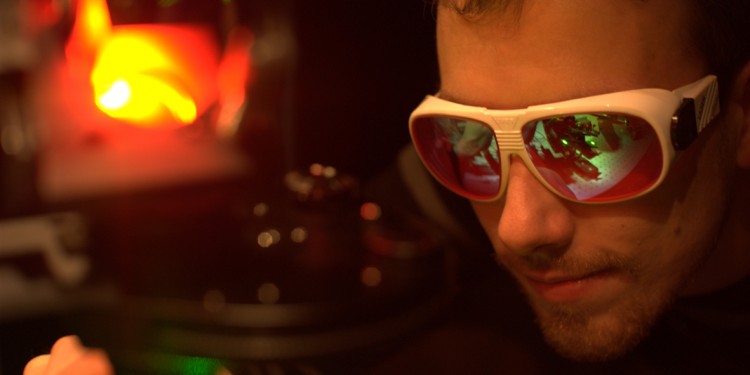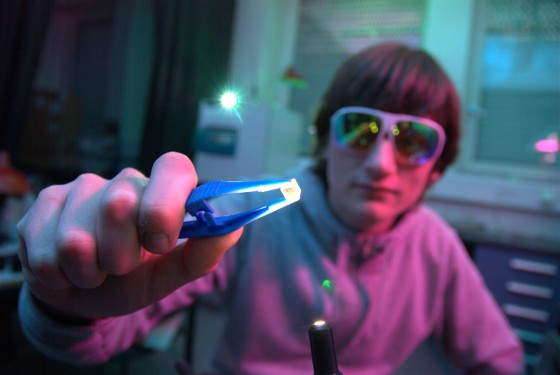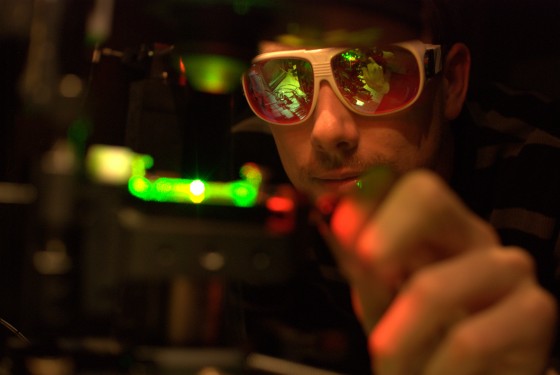
“The chemistry’s right here – and so is the physics“
MÜNSTER/TWENTE. For many experts, nanotechnology is a key technology for the future. At the Universities of Münster and Twente, both national and international researchers are engaged on intensive work on just this future, and many of them are working closely together. "I keep in touch with a lot of colleagues in Münster," says Prof. Klaus Boller, head of the LPNO ("Laser Physics and Nonlinear Optics") research group at Twente. His work with his colleague Carsten Fallnich from the Institute of Applied Physics is particularly successful.
This is just one example of the exemplary collaboration in the field of nanotechnology between Münster University and the Dutch university in Enschede. This collaboration has been going on for about ten years now and both sides benefit from it. Joint research, joint projects – and also joint training. "That works very well in Münster and Twente," says Prof. Cornelia Denz, Director of the Institute of Applied Physics at Münster. Her field of research is optical information processing and nano-biophotonics. And as Pro-Rector for International Affairs and Junior Researchers she is more than satisfied with the positive developments being made in this "complementary research", as she calls it. "The chemistry’s right here – and so is the physics," she adds. In Münster the focus is on basic research, she says, while the colleagues in the Netherlands are more applications-oriented.

Analysing material at the molecular and atomic levels and being able to make specific changes to it is something that scientists have long dreamt of. In nanotechnology this dream is starting to come true.
This rapidly growing cross-sectional technology opens up new possibilities in practically all technical areas, including medical and environmental technology. Further examples of applications are surface refinement, intelligent nano-scale materials, faster electronics, optics, sensors and nano-motors.
The world of nano-particles is one which is unimaginably small. One nanometre is a million times smaller than a millimetre. It is the effects of quantum physics that dominate this world – and these can be completely different to the phenomena we know from our macroscopic world.
For the investigations and specific manipulations that they carry out, nano-researchers today use special microscopes with atomic resolution. In this field, the classic optical microscope is a thing of the past. And they are developing new strategies in nano-photonics to make particles visible and manageable.
New processes and materials are being added constantly. Experts expect there to be a boost for innovation in many areas. Nano-photonics, for example, will provide optical tweezers to make it possible to systematically arrange and steer a large number of nano-particles. Information will be transferred in extremely small nano-chips, with light playing a special role. What is emerging in nano-photonics is the development of a new type of chip generation in which data processing will be based on light and no longer on electronics. This will mean an enormous increase in data transfer speeds, with very low energy consumption and on an extremely small area.
"There have been contacts between Münster and Twente for a long time now"
The high degree of cross-border cooperation between the nano-researchers is something that Prof. Harald Fuchs, Director of the Physical Institute at Münster, can confirm only too well – especially as he is the scientific director of the Center for Nanotechnology (CeNTech), a non-university research institute in which not only the city of Münster and the State of North Rhine-Westphalia but also Münster University are all engaged. Since it was set up in 2003, the Center has made a decisive contribution to establishing nanotechnology as a central area of research at Münster and beyond. "There have been contacts between Münster and Twente for a long time now – in particular because of the MESA+ nanotechnology centre established in Twente. Right from the beginning both centres were looking at European and international science and research."
Specialist laboratories with the requisite equipment, as well as rooms for workshops and meetings, are quite consciously being opened up – across borders – to start-ups and to people looking to set up their own businesses, so that, using technology transfer, they can turn the insights from their research into marketable products. What is important for Fuchs is the interdisciplinary approach in the research work being done. "There are a lot of questions that can no longer be answered today without collaboration between physics, chemistry, biology and medicine," he says.

Klaus Boller and Willem Vos believe that the collaboration with colleagues in Münster can be extended even more. "What is needed for joint projects is third-party funding. But unfortunately there hasn’t been any so far for such innovative, cross-border collaboration – in the middle of Europe," is a criticism that Vos has. All previous attempts to apply for relevant funding failed, he says – so, instead, they built up personal contacts with Münster, focussing on assisting junior researchers. Nevertheless, says Boller, he would "really like to see a cross-border association of optical researchers." Which explains his wish for the future: "It should be promoted much more heavily."
Author: Thomas Krämer
